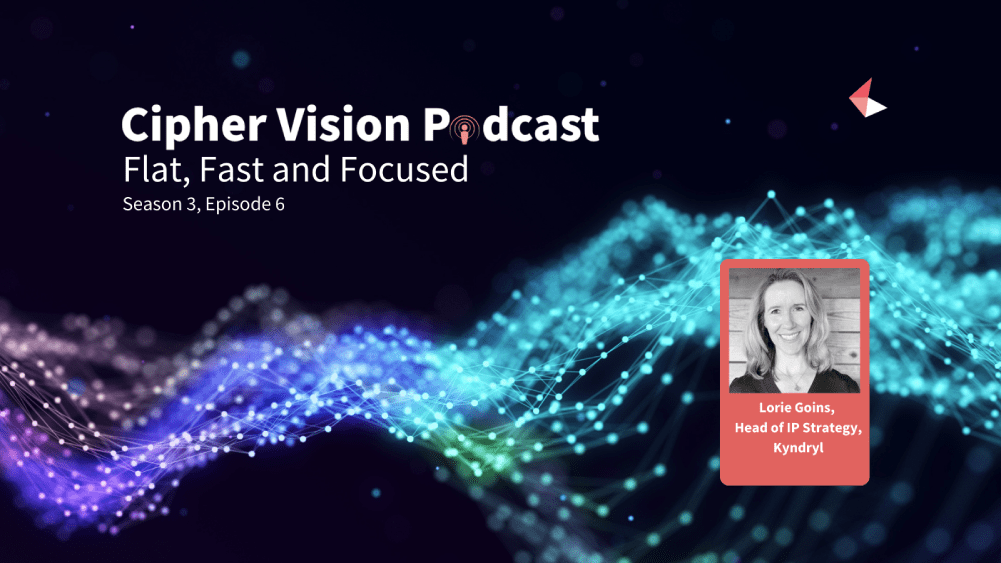Flat, Fast and Focused

Introduction
Episode 6 in Season 3 of the Cipher Vision Podcast series features Lorie Goins, Head of IP Strategy, Kyndryl.
She shares how to approach innovation by adopting a questioning, inclusive, analytical mindset. This is in addition to drawing on tools to form evidence-based decisions that enhance your business and IP strategy.
She chats to the hosts of the Cipher Vision podcast, who are:
- Francesca Levoir, Head of Marketing, LexisNexis Cipher
- Nigel Swycher, CEO, LexisNexis Cipher
Conversation Highlights
Marrying business and IP strategy
I am an IP attorney, but I focus on the business side, bringing that business background, the technology background, the legal background.
Making sure that we’re aligning our business strategy and our IP strategy. And that’s why I sit in the office of the CTO and not in a legal department.
Navigating the heritage of IBM
For 29 years straight, IBM was the number one assignee of patents from the USPTO.
So that 29 years of rich heritage of being the patent leader, has been indoctrinated into a lot of the leadership that we have at Kyndryl.
It makes my job easier initially, because they understand that IP is important.
I like to say patents are the most tangible of the intangibles. It’s something that can be directly measured. So in that regard, having that heritage is beneficial.
What is the definition of innovation?
IP does not equal just patents. So at Kyndryl, we are focused on expanding that to be innovation.
I like to simplify it to the effect that you’re providing incremental improvement to deliver value and that value can be to the customer or to the company itself.
And that’s really where the flat, fast and focused comes in. We’re empowered to question everything, try to figure out, is there a better way to do things?
How analytics helps your IP strategy
We don’t wake up saying, ‘’’What tool can I go find today that can make my job easier?‘’’
But if you do question everything, and you stop and think, are we really doing the right thing? That leads itself to thinking about tools.
That’s really why you have to do analytics, and tools like Cipher can really assist in that regard, taking your portfolio and analysing it and understanding it.
The goal is to figure out what is the best option that fits the corporate needs, and then implement that so that we are providing the best protection possible.



